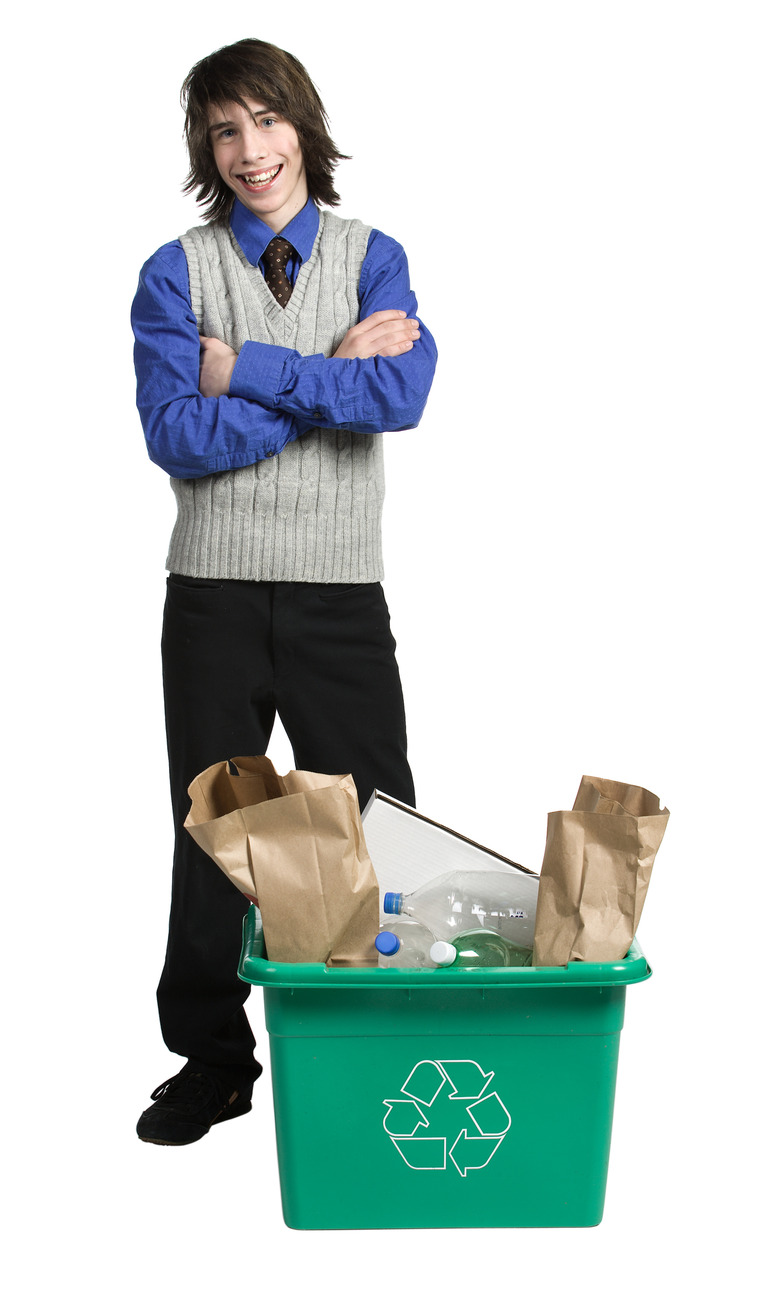Things That Can Be Reduced, Reused Or Recycled
With a little effort, it is possible to reduce your use of most materials, even if they are not recyclable. Many materials can also be reused with a little creativity. Paper, glass, plastic, aluminum and steel are the most commonly recycled materials. Because communities have different recycling systems and requirements, check with your waste-collection company if you are unsure whether a material can be recycled in your area.
Paper Trail
Paper Trail
Americans throw away more paper than any other material. Electronic devices, such as ereaders, have helped to reduce the use of paper somewhat, but often the use of paper is unavoidable. To conserve paper, print documents on both sides of the paper and reuse old papers as scratch paper whenever possible. Once you've used every inch of the paper that you can, put it in a recycling bin. Paper mills use recycled paper to make new paper, newsprint and other products.
Plastic Products
Plastic Products
Used soda bottles, water bottles and other plastic packaging can all be recycled, but more than 90 percent of the plastic we use nonetheless ends up in landfills. Unfortunately, plastics stay in landfills for hundreds of years. Plastics are labeled with numbers 1 through 7; these numbers correspond to types of plastic, and help recyclers sort them for melting and manufacturing purposes. Some recycling centers are unable to process all types of plastic. Grocery bags and containers for toys, food, beverages and health products are some plastic products that can be recycled. Don't hesitate to reuse plastic containers or repurpose them for art and science projects.
Metal Matters
Metal Matters
Programs to encourage soda can recycling help to conserve aluminum and other metals, and several states offer a small refund for every can returned to a recycling center. Most recycled soda cans return to store shelves as another soda can, a process that saves money for the beverage industry and helps the environment. Aluminum is the metal most commonly recycled, but other metals, such as steel, are also candidates for the recycling bin. You may reuse the cans that hold canned food as desktop containers, but do not reuse them to store food.
Clearly Recyclable
Clearly Recyclable
Recycling 1 ton of glass preserves more than 1 ton of natural resources, according to the Glass Packaging Institute, so put glass bottles and containers in the recycling bin instead of the trash. Most recycled glass is used to make new containers for foods and beverages, but low quality recycled glass can be used in fiberglass insulation. Glass containers are also easy to reuse, and doing so reduces the need for glass production. Get creative and use colorful glass in art projects or other decorative ways; some glass containers make beautiful flower vases.
Cite This Article
MLA
Cairoli, Sarah. "Things That Can Be Reduced, Reused Or Recycled" sciencing.com, https://www.sciencing.com/things-can-reduced-reused-recycled-21127/. 24 April 2017.
APA
Cairoli, Sarah. (2017, April 24). Things That Can Be Reduced, Reused Or Recycled. sciencing.com. Retrieved from https://www.sciencing.com/things-can-reduced-reused-recycled-21127/
Chicago
Cairoli, Sarah. Things That Can Be Reduced, Reused Or Recycled last modified March 24, 2022. https://www.sciencing.com/things-can-reduced-reused-recycled-21127/
